
Local and Regional Anesthesia
Scope & Guideline
Pioneering excellence in anesthetic practices.
Introduction
Aims and Scopes
- Clinical Efficacy of Anesthetic Techniques:
The journal investigates various local and regional anesthetic techniques, assessing their effectiveness in pain management across different surgical procedures, including obstetrics, pediatrics, and orthopedic surgeries. - Innovative Anesthesia Techniques:
Research published often highlights novel approaches and techniques in regional anesthesia, such as new nerve blocks or modifications of existing techniques, aimed at enhancing analgesia and reducing side effects. - Safety and Complications of Anesthesia:
The journal addresses safety concerns related to various anesthesia practices, including complications arising from nerve blocks and the management of adverse effects, contributing to the understanding of risk factors in anesthesia. - Education and Practices of Anesthesia Providers:
There is a focus on the knowledge, attitudes, and practices of healthcare professionals regarding local anesthetics, aiming to improve educational strategies and clinical practices in anesthesia administration. - Pediatric Anesthesia:
The journal features studies that specifically address anesthesia techniques and management in pediatric patients, acknowledging the unique challenges and considerations in this population.
Trending and Emerging
- Ultrasound-Guided Techniques:
There is a marked increase in studies utilizing ultrasound guidance for various nerve blocks, reflecting a trend towards more precise and effective anesthesia delivery methods. - Enhanced Recovery After Surgery (ERAS) Protocols:
Research linking regional anesthesia techniques with ERAS protocols is gaining traction, emphasizing the role of effective pain management in optimizing surgical recovery. - Personalized Anesthesia Approaches:
Emerging studies focus on tailoring anesthesia techniques to individual patient needs, particularly in vulnerable populations such as pediatrics and the elderly, highlighting the importance of personalized medicine. - Regional Anesthesia in Trauma and Emergency Settings:
The journal is increasingly publishing research on the application of regional anesthesia techniques in trauma and emergency care, indicating a growing recognition of their utility in acute settings. - Adjuvants in Anesthesia Techniques:
There is a rising trend in exploring the use of adjunct medications, such as magnesium sulfate and ketamine, in enhancing the efficacy of regional anesthesia and reducing opioid consumption.
Declining or Waning
- Traditional Epidural Anesthesia Techniques:
Research on conventional epidural anesthesia techniques seems to be declining, possibly as newer, less invasive techniques gain popularity and acceptance in clinical practice. - General Anesthesia Comparisons:
Papers comparing regional anesthesia to general anesthesia are becoming less frequent, indicating a potential shift towards a more focused exploration of regional anesthesia methodologies. - Basic Anesthesia Education:
The coverage of foundational education on anesthesia practices appears to be decreasing, as the journal increasingly emphasizes advanced techniques and innovative practices over basic educational content.
Similar Journals
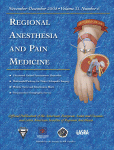
REGIONAL ANESTHESIA AND PAIN MEDICINE
Pioneering Discoveries in Regional AnesthesiaREGIONAL ANESTHESIA AND PAIN MEDICINE, published by the BMJ Publishing Group, stands at the forefront of publishing innovative research and advancements in the fields of anesthesiology and pain management. Since its inception in 1998, this journal has become an essential resource for clinicians, researchers, and students, featuring insightful articles that span basic research, clinical trials, and reviews, all aimed at improving patient outcomes. With an impressive impact factor and ranking as a Q1 journal in both Anesthesiology and Pain Medicine, as well as a ranking of #11 out of 136 in Scopus, it showcases some of the most significant contributions to the discipline. The journal's commitment to disseminating high-quality, peer-reviewed content underlines its integral role in enhancing clinical practices, educating professionals, and shaping future research directions. As an open-access journal, it ensures that critical findings are accessible to a global audience, further promoting its mission to advance health care practices across various settings.

Ain Shams Journal of Anesthesiology
Exploring New Frontiers in Anesthesia KnowledgeAin Shams Journal of Anesthesiology, published by Ain Shams University, is a preeminent open access journal in the dynamic field of anesthesiology, dedicated to advancing the scientific and clinical knowledge surrounding anesthesia practices. Since its initiation into open access in 2018, the journal has enabled broader dissemination of high-quality research, making key findings accessible to a global audience. With an ISSN of 1687-7934 and an E-ISSN of 2090-925X, the journal strives to publish original research, reviews, and clinical studies that address both contemporary issues and innovations within the discipline. Set against the backdrop of Cairo, Egypt, this journal is committed to fostering collaborative and interdisciplinary dialogue among researchers, practitioners, and students, thereby promoting evidence-based practices in anesthesiology. By prioritizing rigorous peer review and scientific integrity, the Ain Shams Journal of Anesthesiology plays a crucial role in shaping the future of anesthesia care and education.
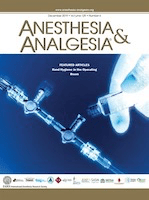
ANESTHESIA AND ANALGESIA
Connecting Research and Clinical Practice in AnesthesiaANESTHESIA AND ANALGESIA, published by Lippincott Williams & Wilkins, stands as a pivotal journal in the field of anesthesiology and pain medicine, aiming to advance scientific knowledge and clinical practice since its inception in 1957. This esteemed journal boasts an impressive Q1 ranking in its category, sitting at the 6th position out of 136 in the Scopus rankings, placing it within the top 5% of its field. With an emphasis on delivering high-quality, peer-reviewed research, ANESTHESIA AND ANALGESIA serves as a vital resource for researchers, practitioners, and students alike, offering insights into the latest advancements and methodologies in pain management and anesthesia. The journal is committed to fostering a deeper understanding of these critical areas of medicine, ensuring that its content is accessible to a diverse audience, and despite not offering open access, provides comprehensive coverage of transformative clinical practices and innovations. The journal's address, located at TWO COMMERCE SQ, 2001 MARKET ST, PHILADELPHIA, PA 19103, reflects its establishment within a hub of medical research and education in the United States.
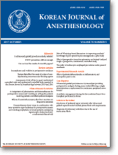
Korean Journal of Anesthesiology
Shaping the Future of Anesthetic Science TogetherKorean Journal of Anesthesiology, published by the Korean Society of Anesthesiologists, stands as a premier platform for advancing the field of anesthesiology and pain medicine. Since 1968, this open access journal has fostered a rich exchange of knowledge, contributing to its esteemed Q1 category ranking in 2023, which highlights its impactful contributions among its peers. With the Scopus ranking of #25 out of 136 in anesthesiology and a commendable 81st percentile, the journal aims to bridge the gap between research and clinical practice by publishing innovative research, comprehensive reviews, and case reports. Based in South Korea, it serves as a vital resource for researchers, medical professionals, and students dedicated to the enhancement of patient care and advancements in anesthesiology practice. As it converges its efforts through 2024 and beyond, the journal remains committed to disseminating high-quality research that shapes the future of anesthetic science.
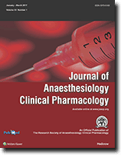
Journal of Anaesthesiology Clinical Pharmacology
Connecting Research and Clinical Excellence in AnesthesiologyJournal of Anaesthesiology Clinical Pharmacology, a distinguished publication by Wolters Kluwer Medknow Publications, is at the forefront of advancing knowledge in the fields of anesthesiology, clinical pharmacology, and pain medicine. Since its inception, this Open Access journal has committed itself to disseminating high-quality research and reviews that cater to the evolving needs of professionals, researchers, and students worldwide. With an ISSN of 0970-9185 and an E-ISSN of 2231-2730, this journal serves as a significant platform for sharing innovations and clinical practices within its scope. Notably, it holds a Q3 ranking in Anesthesiology and Pain Medicine and a Q2 ranking in Pharmacology, Toxicology, and Pharmaceutics (miscellaneous), reflecting its impactful contributions to the scientific community. Published in India, the journal has evolved from its converged years of 1996 to 1999 and from 2002 to 2024 to become a recognized source of expertise in clinical pharmacology. Its Scopus rankings underscore its commitment to quality, placing it within the competitive landscape of medical literature. Explore cutting-edge studies and clinical insights as you engage with a journal dedicated to the optimal management of anesthesia and pain therapies.

Journal of Anesthesia
Elevating Standards in Anesthesiology ResearchJournal of Anesthesia, published by SPRINGER JAPAN KK, is a leading peer-reviewed journal dedicated to advancing the field of anesthesiology and pain medicine. With an ISSN of 0913-8668 and an E-ISSN of 1438-8359, the journal features high-quality research articles, reviews, and clinical studies that encompass both the scientific and practical aspects of anesthesia. Situated in Japan and categorized within the Q2 quartile for Anesthesiology and Pain Medicine, it holds a commendable rank of #33 out of 136 in Scopus, placing it in the top 24% of its category. The impact factor is under continuous evaluation, reflecting the journal's commitment to innovative research contributions. Published annually since its inception in 1987 and continuing through 2024, the journal provides crucial insights and discussions pertinent to the contemporary challenges faced in medicine. While it offers traditional subscription services, its significance in the realm of anesthesiology makes it a vital resource for researchers, professionals, and students seeking to explore the latest advancements and practices in the discipline.

Anesthesiology Research and Practice
Enhancing clinical practices through rigorous research and collaboration.Anesthesiology Research and Practice, a prestigious open access journal published by HINDAWI LTD, serves as a vital platform for the dissemination of cutting-edge research in the fields of anesthesiology, pain medicine, and critical care. Since its inception in 2008, the journal has established itself as a key resource for researchers, clinicians, and students in the medical community, evidenced by its Q2 ranking in both Anesthesiology and Pain Medicine and Critical Care and Intensive Care Medicine. With a diverse range of articles covering innovative techniques, clinical studies, and reviews, the journal plays a crucial role in advancing knowledge and improving practices in anesthesiology. The accessible structure of the journal means that research is freely available, facilitating widespread impact and engagement in the pertinent fields. With a continued commitment to excellence, Anesthesiology Research and Practice is poised to make significant contributions to the field up to 2024 and beyond.
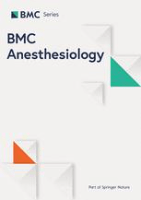
BMC Anesthesiology
Elevating Standards in Anesthesia Research and EducationBMC Anesthesiology, published by BMC, is a distinguished open-access journal that has been serving the anesthesiology community since its inception in 2001. With an ISSN of 1471-2253, this journal fosters the dissemination of high-quality research in the fields of anesthesiology and pain medicine. As of 2023, it holds a commendable Q2 ranking in its category, demonstrating its significant contribution to the field, supported by its Scopus rank of #51 out of 136, placing it in the 62nd percentile. Operating out of London, United Kingdom, BMC Anesthesiology embraces an open-access model, ensuring that research is readily available to professionals, researchers, and students, thereby advancing knowledge and collaboration within the anesthesiology domain. With an ambitious scope covering a wide array of topics related to anesthesia and pain management, the journal aims to enhance clinical practices and promote innovative research methodologies, making it an essential resource for anyone engaged in this critical area of medicine.

Annals of Cardiac Anaesthesia
Innovating Practices in Cardiac Anaesthesia.Annals of Cardiac Anaesthesia is a distinguished open-access journal published by Wolters Kluwer Medknow Publications since 2008, focusing on the interplay between anaesthesia practices and cardiovascular health. With an ISSN of 0971-9784 and an E-ISSN of 0974-5181, this journal serves as a vital resource for researchers, practitioners, and students in the fields of Anesthesiology, Cardiology, and Medicine. Operating in India and contributing significantly to the global medical community, it ranks in the Q3 category for both Anesthesiology and Pain Medicine, as well as Cardiology and Cardiovascular Medicine, reflecting its growing impact within these domains. The journal encompasses a wide array of topics, from surgical anaesthesia techniques to cardiovascular physiology, aiming to enhance clinical practice and outcomes. With Scopus rankings placing it at 75th in Anesthesiology and 267th in Cardiology, Annals of Cardiac Anaesthesia strives to foster knowledge exchange and innovation, making it an essential platform for those committed to advancing cardiac anaesthesia science.

Indian Anaesthetists Forum
Advancing Anesthesia: Bridging Research and PracticeThe Indian Anaesthetists Forum, an esteemed periodical in the field of anesthesiology, is published by Wolters Kluwer Medknow Publications. Since its inception in 2000, this Open Access journal has been a pivotal platform for the dissemination of high-quality research and clinical insights pertinent to anesthetists and pain specialists in India and beyond. With a focus on advancing the science and practice of anesthesiology, the journal aims to bridge the gap between innovative research and practical application, making it a vital resource for professionals, researchers, and students in the medical community. Its commitment to open access ensures that knowledge is readily available, fostering collaboration and education in this essential field. Positioned to support ongoing advancements in patient safety, anesthesia techniques, and pain management, the Indian Anaesthetists Forum stands as a significant contributor to the global anesthesiology landscape.